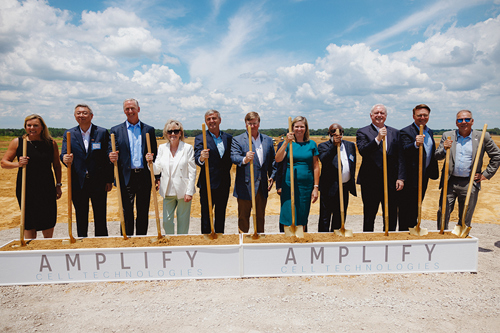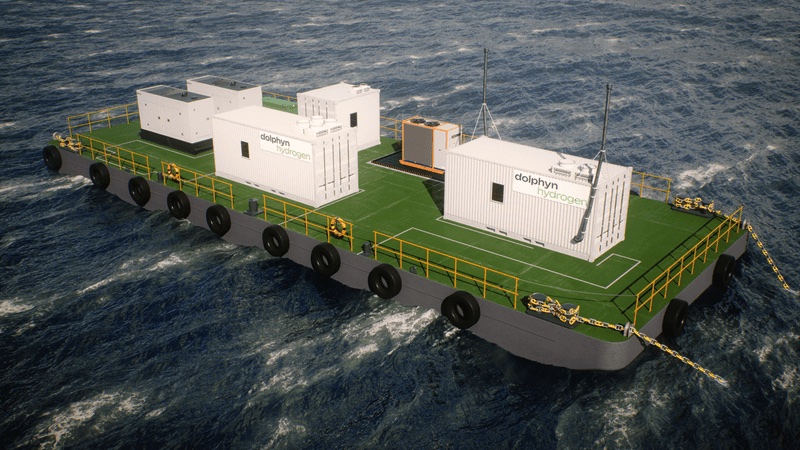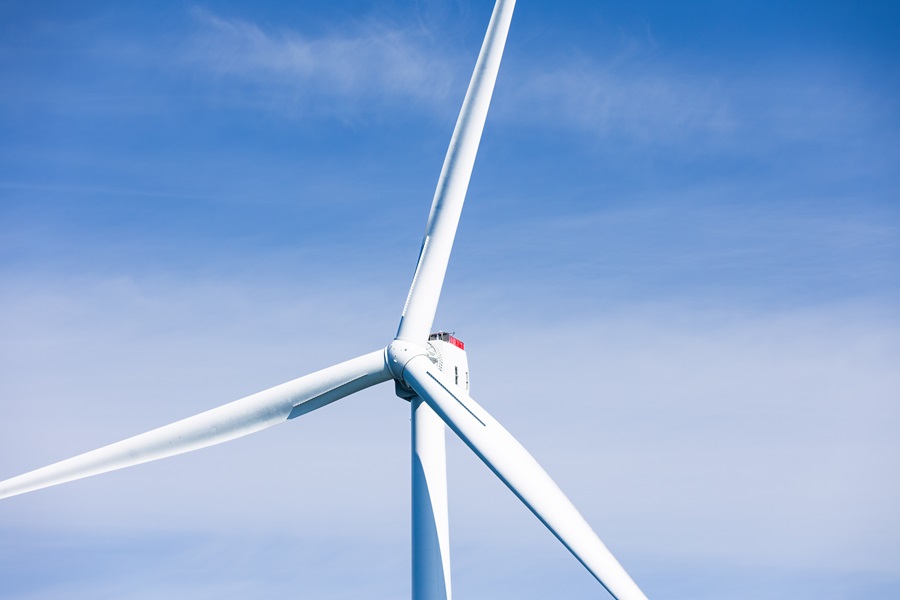Texas-headquartered American Airlines is betting on hydrogen-electric engines to help power regional jet aircrafts and lower emissions.
American Airlines said July 2 it entered a conditional purchase agreement with ZeroAvia, a California based hydrogen-electric aircraft developer, for 100 hydrogen-electric engines. American Airlines also upped its investment in the startup by participating in ZeroAvia’s Series C financing round.
The engines use hydrogen in fuel cells to generate electricity, which is then used to power electric motors to turn the aircraft’s propellers. Only low-temperature water vapor is emitted during the process, according to a news release. The technology could push American Airlines closer to its goal to hit net-zero greenhouse gas emissions by 2050.
“Advancing the transition of commercial aviation to a low-carbon future requires investments in promising technologies, including alternate forms of propulsion,” said American’s CEO Robert Isom. “This announcement will help accelerate the development of technologies needed to power our industry and uphold our commitment to make American a sustainable airline so we can continue to deliver for customers for decades to come.”

American Airlines said ZeroAvia is flight testing a prototype for a 20-seat plane and designing an engine for larger aircraft such as the Bombardier CRJ700, which the airlines uses on some regional routes.
Hydrogen, which can be produced with a variety of feedstocks that include biomass and natural gas, can be used as an alternative transportation fuel either directly or to feed a fuel cell to generate electricity. Several airlines and manufacturers—including American, United Airlines and Airbus—have been exploring its use to help lower emissions but costs remain high compared to the fossil fuels used today.
Despite the potential, money woes have slowed efforts. The Seattle Times first reported last week that Universal Hydrogen, the so-called pioneer of hydrogen-powered flight, is shutting down after burning through the $100 million or so it raised from investors. The company was unable to raise money funds to continue operating.
Here’s a look at other renewable energy news this week.
Bioenergy
Shell Pauses Construction of European Biofuels Facility
Current market conditions have prompted Shell to temporarily halt onsite construction at the 820,000-tonne per year biofuels facility it is building in the Netherlands, the company said July 2.
To help control costs at the project, which is designed to produce sustainable aviation fuel and renewable diesel made from waste, Shell said it will reduce contractor numbers on-site and slow down activity.
“Temporarily pausing on-site construction now will allow us to assess the most commercial way forward for the project,” said Huibert Vigeveno, downstream, renewables and energy solutions director for Shell.
The company plans to conduct an impairment review for the project and deliver further guidance in its second-quarter update note scheduled for publication July 5. The company took a final investment decision on the project in September 2021 and originally planned to start production in 2024.
“We are committed to our target of achieving net-zero emissions by 2050, with low-carbon fuels as a key part of Shell’s strategy to help us and our customers profitably decarbonize,” Vigeveno said. “And we will continue to use shareholder capital in a measured and disciplined way, delivering more value with less emissions.”
Energy storage
Amplify JV Breaks Ground for Battery Cell Factory in Mississippi

Construction has started on the 2 million-sq-ft lithium iron phosphate battery cell factory being developed by Amplify Cell Technologies, a joint venture between Accelera, Daimler Trucks & Buses U.S. Holding LLC and PACCAR.
Located in Marshall County, Mississippi, the facility will have an annual manufacturing capacity of 21 gigawatt hours, according to a July 1 news release. Production of the battery cells is expected to begin in 2027.
“United in the mission to decarbonize our highways and interstates, our founding partners are making a serious commitment,” said Amplify Cell Technologies CEO Kel Kearns. “Marking the start of construction on site signifies this collective effort, and together we will lead the transformation of the commercial transportation industry.”
Accelera, Daimler Truck and PACCAR—each with a 30% stake in Amplify—have committed a combined $2 billion to $3 billion investment, the release stated. EVE Energy holds the remaining 10% and serves as the technology partner.
Hydrogen
ERM Launches Offshore Hydrogen Production Trials in South Wales

Sustainability consultancy ERM and Dolphyn Hydrogen have launched offshore tests for the Dolphyn Hydrogen process, which combines electrolysis, desalination and hydrogen production on a floating wind platform.
The launch, which follows six years of development and more than £8 million (US$10 million) in funding to date, is taking place in a floating marine environment in Pembroke Port, South Wales, ERM said in a July 2 news release. As part of the process, hydrogen is transported to shore via pipeline, where it can be used for power generation, transport, industrial purposes and heating. It does not require an electrical connection.
“We are excited to see this vision translate into reality with the UK’s first offshore hydrogen production trials,” said ERM Group CEO Tom Reichert. “We look forward to building on this momentum to help drive progress towards a low-carbon future.”
ERM said it also incorporated a first-of-a-kind digital twin using ERM’s emissions.AI, which helps optimize energy efficiency of facilities and minimize emissions, to help accelerate learnings and deployment.
“Low-carbon hydrogen has a key role to play in supporting the energy transition, enhancing our energy security and generating skilled green economy jobs,” said Dolphyn Hydrogen CEO Steve Matthews. “These Dolphyn Hydrogen trials mark an important milestone in our journey to deploy affordable, low-carbon hydrogen at scale that will help to deliver a more sustainable future for all.”
Italian Steel Plant Launches Trial to Use Hydrogen to Cut Emissions
Italian gas grid operator Snam, steel pipe maker Tenaris and green technology firm Tenova are trialing the use of hydrogen fuel at a Tenaris steel plant in northern Italy in a bid to cut emissions, they said on July 3.
According to a joint statement from the companies, the trial will use hydrogen fuel in a reheating furnace at the plant in Dalmine, near Bergamo and is expected to last six months.
It will track the performance and reliability of using hydrogen in the steel industry, the statement said, and is part of Snam’s broader move to help industrial companies decarbonize.
Hydrogen’s main by-product as a fuel is water vapor, along with small amounts of nitrogen oxides, making it far less polluting than fossil fuels—assuming it does not cause further pollution via leaks.
Earlier in May, Italy, Germany and Austria signed a cooperation deal to develop a hydrogen transportation network from the southern Mediterranean to northern Europe.
Solar
Solar Cell Maker Toyo, Blue World, Vietnam Sunergy Complete Merger
Japan-based solar cell manufacturer Toyo Co. and special purpose acquisition company Blue World Acquisition Corp. have completed their combination with Vietnam Sunergy Cell Co. Ltd., an Abalance Corp. subsidiary, according to a news release July 2.
The company is expected to trade on the Nasdaq stock exchange under the ticker symbol TOYO.
“We believe TOYO will uphold its commitment to becoming a reliable provider of comprehensive solar solutions globally,” Blue World CEO Liang Shi said in the release. “The upcoming Nasdaq listing will serve as a catalyst, significantly enhancing TOYO’s international reach by strengthening its brand with potential U.S. customers and unlocking broader access to capital.”
Toyo is a holding company wholly owned by Abalance Corp. subsidiary Fuji Solar Co.
“We feel fortunate to embark on a new journey becoming a U.S.-listed company through the business combination with Blue World,” said Toyo CEO Junsei Ryu. “We are committed to powering the world with green and clean energy and showcasing our quality products and services on a larger global stage.”
Google Buys Stake in BlackRock-owned Taiwan Solar Power Firm
Google has taken a stake in Taiwan’s New Green Power and could buy up to 300 megawatts (MW) of renewable energy from a BlackRock-owned firm to help cut its carbon emissions and those of suppliers.
Companies are being pushed to cut greenhouse gas emissions linked to their operations and value chains by investors and Big Tech firms have been among the most ambitious in their targets.
Google aims to constantly run on carbon-free energy wherever it operates. Yet sector growth in demand for data-processing capacity to power artificial intelligence has seen emissions jump.
Taiwan, a major site for Google’s cloud technology with a data center and company offices, still relied on fossil fuels to generate nearly 85% of its power, Amanda Peterson Corio, Google’s global head of data center energy told Reuters.
“The goal of this investment is really to support the build out of a large-scale solar pipeline in Taiwan,” Corio added.
Regions such as Asia Pacific can be harder to decarbonize due to less developed infrastructure and restrictions limiting the ability of corporate users to buy green power.
New Green Power, owned by a fund managed by BlackRock’s Climate Infrastructure business, was one of the leading solar developers and operators in Taiwan, BlackRock’s Global Head of Climate Infrastructure David Giordano told Reuters.
Google and BlackRock both declined to specify the size of the equity stake being taken in NGP, but Corio said the investment was expected to drive the equity and debt financing for the build-out of its 1-gigawatt (GW) pipeline.
Taiwan is targeting 20 GW of solar capacity by 2025 and up to 80 GW by 2050, BlackRock said.
Corio said that as well as using some of the solar power it buys to drive its own operations, Google would also be able to offer some to its suppliers and manufacturers in the region.
Sharing with suppliers would help Google lower its so-called Scope 3 emissions, those tied to its value chain, she added.
Ampion, Wendy’s Form Community Solar Partnership
Ampion Renewable Energy, a Boston-based community solar provider, has partnered with The Wendy’s Co. to help power restaurants with renewable energy, according to a news release.
The restaurant chain aims to reduce its Scope 1 and 2 emissions by 47%, and Scope 3 emissions from franchisees by 47% per restaurant by 2030. The reductions are based on 2019 emissions.
“As the need for reducing carbon emissions grows, community solar combined with RECs [renewable energy certificates] provides a solution for environmental sustainability in the corporate sector that is both achievable and affordable, while enabling companies to quantify and disclose their progress in a standardized manner,” said Ampion CEO Nate Owen. “We’re seeing more large companies actively seeking sustainable solutions through community solar.”
Nearly 100 of Wendy’s company-operated restaurants and 40 franchise restaurants in New York, Illinois and Massachusetts are enrolled in Ampion+, which helps organizations lower energy costs and secure RECs. Participating restaurants will source between 30% and 100% of their energy from solar. So far, the locations have enrolled about 27.5 million kilowatt hours in community solar, the release states.
Wind
US Approves Avangrid’s New England Offshore Wind Project

The U.S. Bureau of Ocean Energy Management (BOEM) has approved the 2.6-GW New England Wind project being developed offshore Massachusetts by Iberdrola Group’s Avangrid.
The two-part wind project, known as New England Wind 1 and New England Wind 2, is expected to generate enough wind energy to power more than 900,000 homes annually, BOEM said in a news release July 1. Combined, plans for New England Wind include up to 129 wind turbine generators, five electric service platforms and five offshore export cables transmitting electricity to onshore transmission systems in Bristol County, Massachusetts.
“By securing all federal, state, regional, and local permits, New England Wind 1 has the potential to put shovels in the ground next year and deliver thousands of jobs, local investment, and needed clean energy before the end of the decade,” Avangrid CEO Pedro Azagra said.
New England Wind will border Vineyard Wind—the utility-scale offshore wind farm Avangrid is jointly developing with Copenhagen Infrastructure Partners—to the south. With 10 turbines running, Vineyard Wind became the largest operating offshore wind farm in the U.S. in late June.
The 791-MW New England Wind 1, formerly called Park City Wind, could begin delivering power by 2029, Avangrid said.
Reuters contributed to this report.
Recommended Reading
Woodside Divests Greater Angostura Assets to Perenco for $206MM
2025-03-28 - The Greater Angostura field produces approximately 12% of Trinidad and Tobago’s gas supply, said Woodside CEO Meg O’Neill in a press release.
Glenfarne Deal Makes Company Lead Developer of Alaska LNG Project
2025-03-28 - Glenfarne Group LLC is taking over as the lead developer of the Alaska LNG project with the acquisition of a majority interest in the project from Alaska Gasline Development Corp.
Mentor Buys Diamondback-Operated Royalty Acres in Permian
2025-03-28 - Mentor Capital Inc. has purchased a 25.127 net royalty acre stake in West Texas’ Permian Basin.
BP to Sell Downstream Business in Austria
2025-03-27 - The sale, expected to be complete by year-end 2025, includes over 260 of BP’s retail sites across Austria.
Prairie Operating Closes $600MM D-J Acquisition from Bayswater
2025-03-27 - Prairie Operating Co. has closed on its $602.75 million acquisition of Denver-Julesburg Basin assets from Bayswater Exploration and Production.
Comments
Add new comment
This conversation is moderated according to Hart Energy community rules. Please read the rules before joining the discussion. If you’re experiencing any technical problems, please contact our customer care team.






